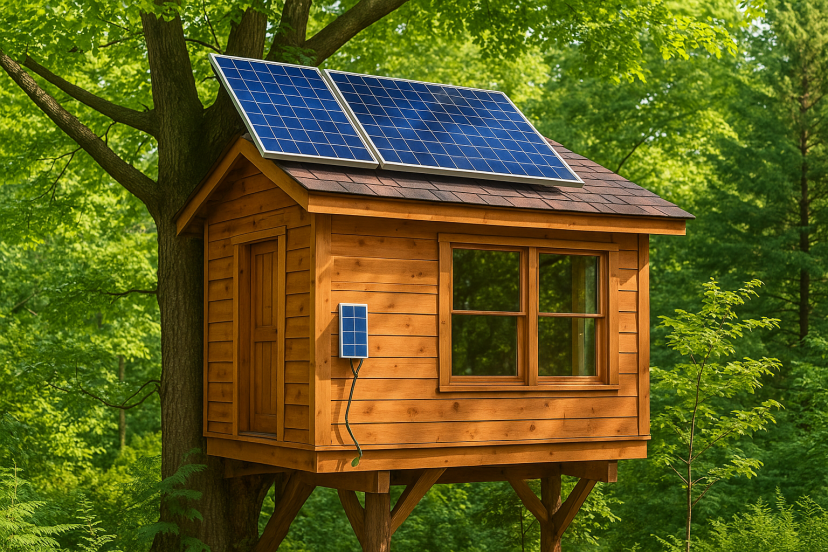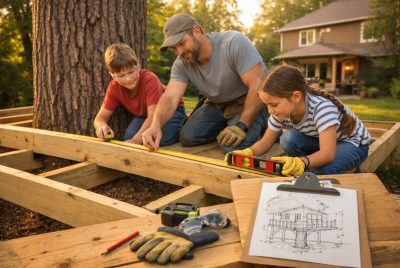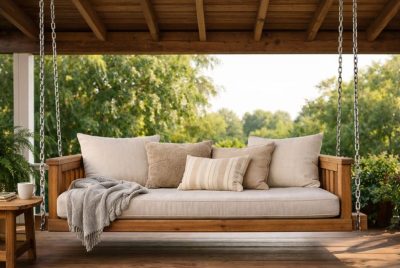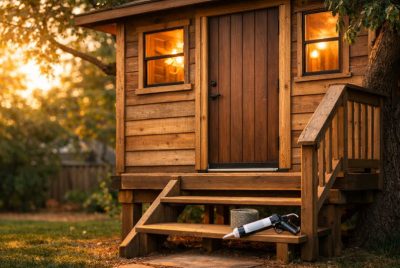How to Safely Add Electricity & Lighting to Your Treehouse
We may earn a commission for purchases made using our links. Please see our disclosure to learn more.
When building a treehouse, it’s easy to get lost in the excitement of the project. But one thing that often gets overlooked is how to safely add electricity and lighting to your treehouse. Whether you’re looking to make your treehouse a cozy getaway or a functional space for work and play, proper electrical wiring is essential for safety and comfort. In this article, we’ll guide you step-by-step on how to safely add electricity and lighting to your treehouse, including the tools you’ll need, potential hazards to avoid, and some product recommendations to help you along the way.
Adding electricity to your treehouse isn’t just about lights – it’s about creating a comfortable, functional space that’s safe for everyone. Keep reading to find out how you can add electricity without compromising on safety.
Getting Started: Electrical Wiring for Your Treehouse
Before you start wiring your treehouse, it’s important to grasp the fundamentals of electricity and how it functions in this unique environment. Although your treehouse may have a cozy, rustic feel, it still needs to meet safety standards when incorporating electrical systems.
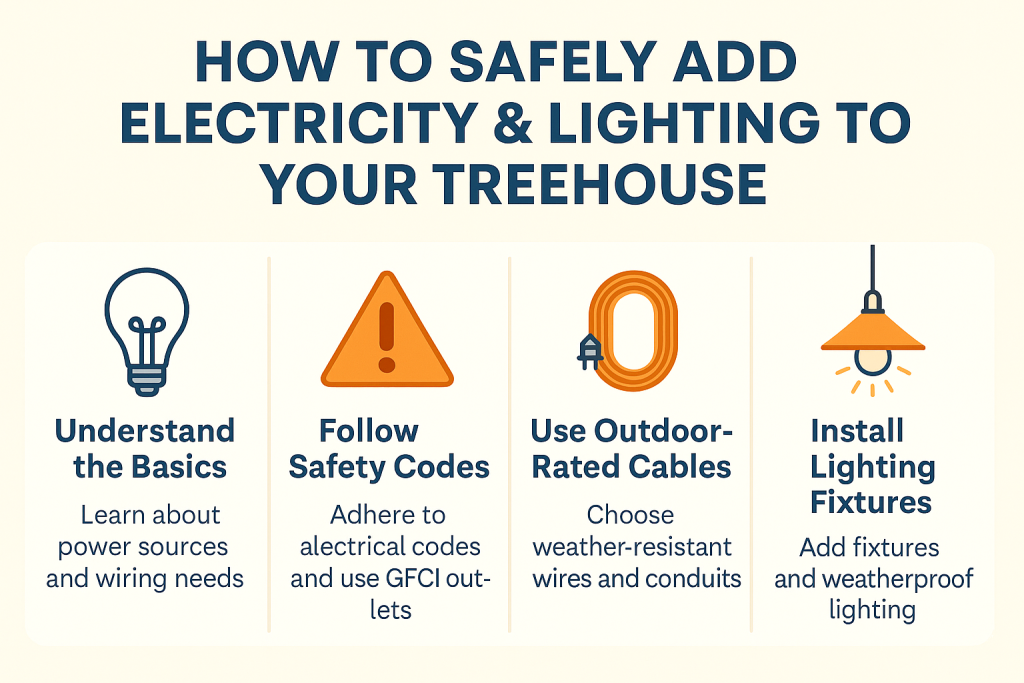
Step 1: Evaluating Your Power Source
The first thing you need to do is figure out how you’ll supply power to your treehouse. If it’s located near your main house, you might be able to connect to your home’s electrical system. On the other hand, if your treehouse is more remote, you may need to look into alternative power options like a generator or solar panels.
Power Source Options:
- Solar Panels: If you’re off the grid, solar panels are an eco-friendly solution.
- Extension Cords or Generators: If you want to power small appliances, a heavy-duty extension cord or a generator might suffice.
- Grid Power: If your treehouse is near your home, running a line from your house to the treehouse could be the most efficient option.
Step 2: Prioritize Safety: Electrical Codes & Regulations
Electrical codes are in place to guarantee safe installation of electrical systems. It’s important to review your local building codes and, if needed, consult with a licensed electrician for guidance. Depending on your location, you might also need a permit for the electrical installation in your treehouse.
Essential Safety Guidelines:
- Ground Fault Circuit Interrupter (GFCI): These are necessary for areas where water exposure is a risk.
- Outdoor-Rated Wiring: Make sure all wiring is specifically designed to withstand outdoor conditions and is safe for use in your treehouse.
Step 3: Selecting the Right Wiring
When installing electrical wiring in your treehouse, it’s essential to choose cables that are rated for outdoor use. These outdoor cables are built to endure harsh weather conditions and extreme temperatures, making them far more durable than indoor wiring. Here’s what you’ll need:
- Outdoor Extension Cords: Specifically designed for environments where exposure to moisture or fluctuating temperatures is common.
- Conduit & Wiring: Protecting your wiring with weatherproof conduit ensures it remains safe from the elements and any potential damage from animals.
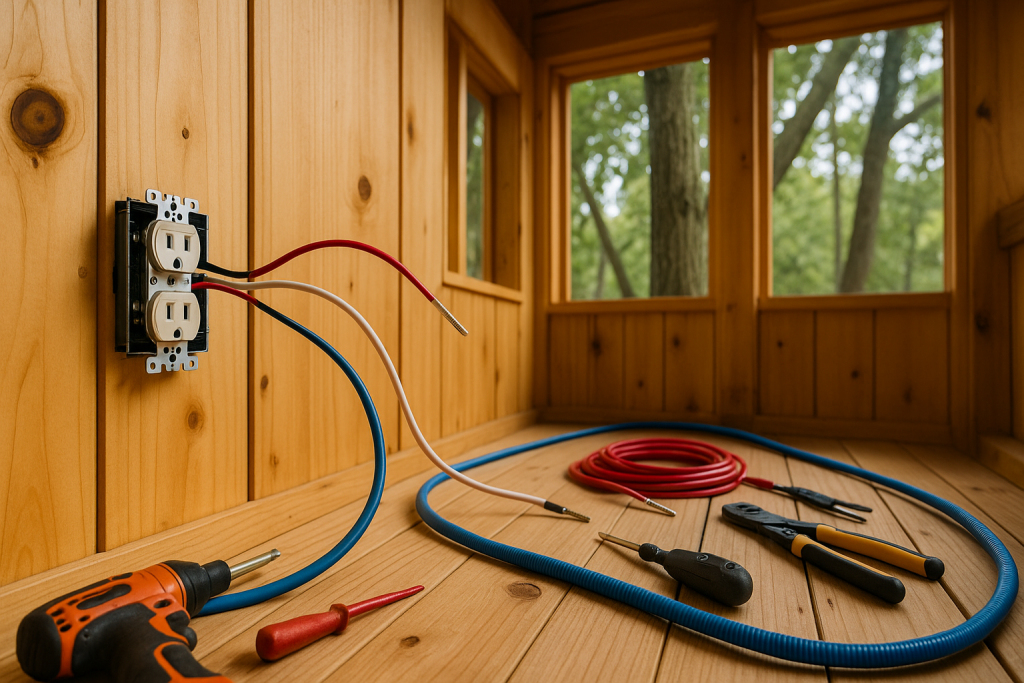
Product Recommendations: Top Electrical Products for Your Treehouse
Here are five recommended electrical products to help you safely add electricity and lighting to your treehouse:
1. BESTEK 300W Power Inverter
- Features: Compact and portable, this power inverter allows you to use household appliances with your car or generator.
- Pros: Easy to install and use.
- Cons: Limited power output.
- Use Case: Perfect for powering small devices, such as lamps or small appliances.
2. Renogy 100 Watt Solar Panel Kit
- Features: Includes everything needed to get started with solar power, ideal for off-grid setups.
- Pros: Reliable and efficient, perfect for eco-conscious builders.
- Cons: Requires sunlight for best results.
- Use Case: Best for powering lights, fans, and small appliances in a fully off-grid treehouse.
3. Minka-Aire Light Kit Ceiling Fan
- Features: A stylish ceiling fan with integrated lighting for energy-efficient cooling and lighting.
- Pros: Dual functionality as a fan and light source.
- Cons: Requires ceiling installation and wiring.
- Use Case: Ideal for maintaining airflow and lighting in your treehouse without extra electrical equipment.
4. Southwire 12/3 Outdoor Extension Cord
- Features: Heavy-duty outdoor extension cord with built-in safety features.
- Pros: Weather-resistant and durable.
- Cons: Limited to use within range of a power outlet.
- Use Case: Best for connecting temporary lighting or powering outdoor equipment.
5. Lutron Caseta Smart Dimmer Switch
- Features: Wireless dimming control for lights, great for customizing the ambiance of your treehouse.
- Pros: Compatible with smart devices.
- Cons: Requires a Wi-Fi connection.
- Use Case: Control lighting intensity from anywhere in your treehouse using your smartphone or voice assistant.
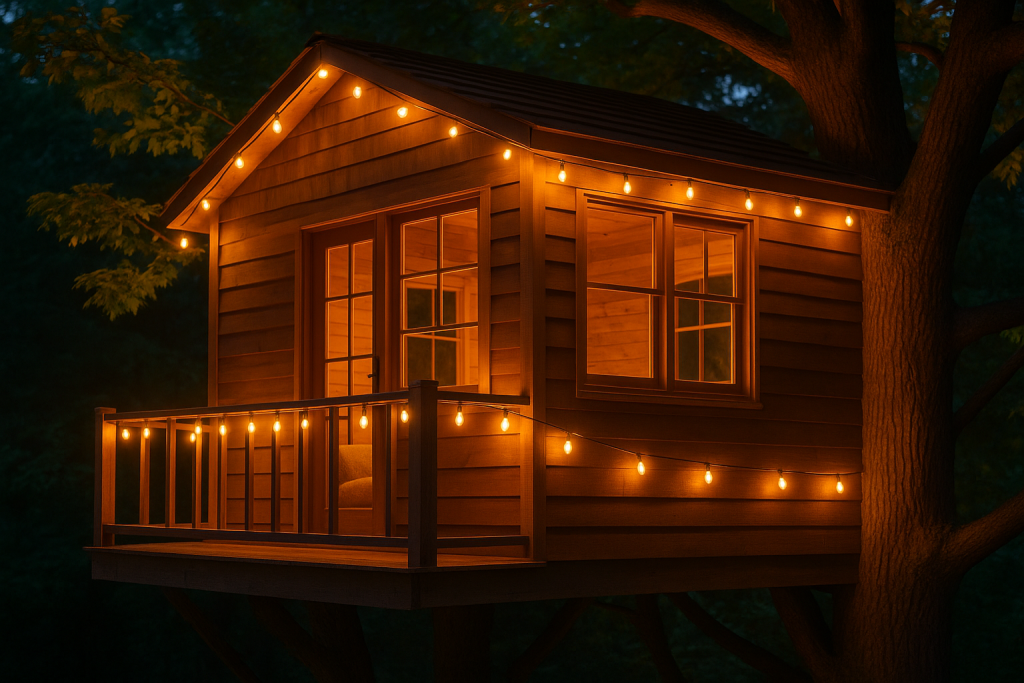
🧪 Backed by Research: What Science Says
To support this article with credible sources, here are some relevant studies and expert reviews:
A study published in the Journal of Environmental Health found that outdoor lighting could help reduce nighttime accidents and improve safety around treehouses and outdoor structures.
👉 Read more about the benefits of outdoor lighting.
This comprehensive review from the National Fire Protection Association highlights the importance of following electrical safety codes to prevent fire hazards, especially in structures like treehouses.
👉 Learn more about electrical safety codes.
FAQs
1. How do I power my treehouse if it’s off the grid?
You can use solar panels, wind power, or a portable generator to supply electricity to your treehouse. Solar panels are a great eco-friendly option for powering lights and small appliances.
2. Can I run electrical wiring from my home to my treehouse?
Yes, it’s possible to run a power line from your home, but make sure to consult with a licensed electrician to ensure everything is up to code for safety.
3. What’s the best way to light my treehouse?
You can use LED lighting, battery-powered lights, or solar-powered lights to keep your treehouse bright and energy-efficient.
4. Do I need to hire a professional to install electricity in my treehouse?
It’s always a good idea to consult with an electrician, especially if you’re unsure about wiring or safety regulations. While some DIY setups are simple, safety is paramount.
5. What are some essential safety tips when wiring my treehouse?
Make sure to use weather-resistant outdoor-rated cables, install a GFCI outlet, and ensure that all electrical connections are secure and properly insulated.
For more inspiration on tiny living, check out this article on Tiny House Communities for Affordable Living.
Conclusion
Adding electricity and lighting to your treehouse can transform it into a comfortable and functional space. Whether you’re tapping into grid power or going off the grid with solar panels, it’s crucial to prioritize safety and follow electrical codes. By choosing the right products, like outdoor-rated wiring and smart lighting systems, you can create a safe and welcoming environment.

